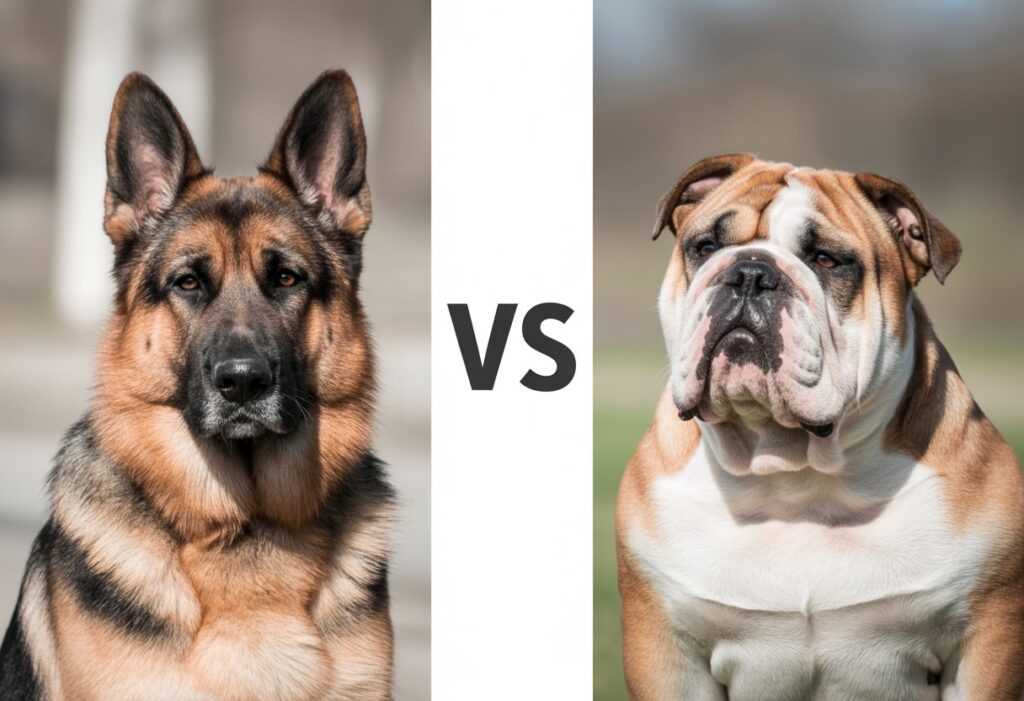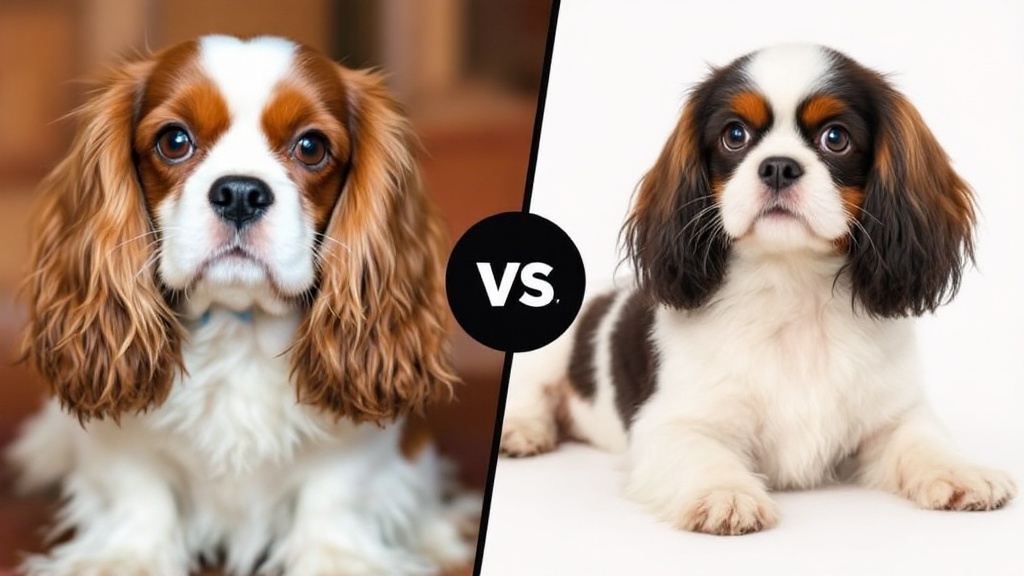Choosing between a German Shepherd and a Bulldog can be tricky if you’re searching for a loyal canine buddy. German Shepherds and Bulldogs really stand apart in how they look, act, and fit into your life.
Getting a handle on these differences will make your decision a whole lot easier.
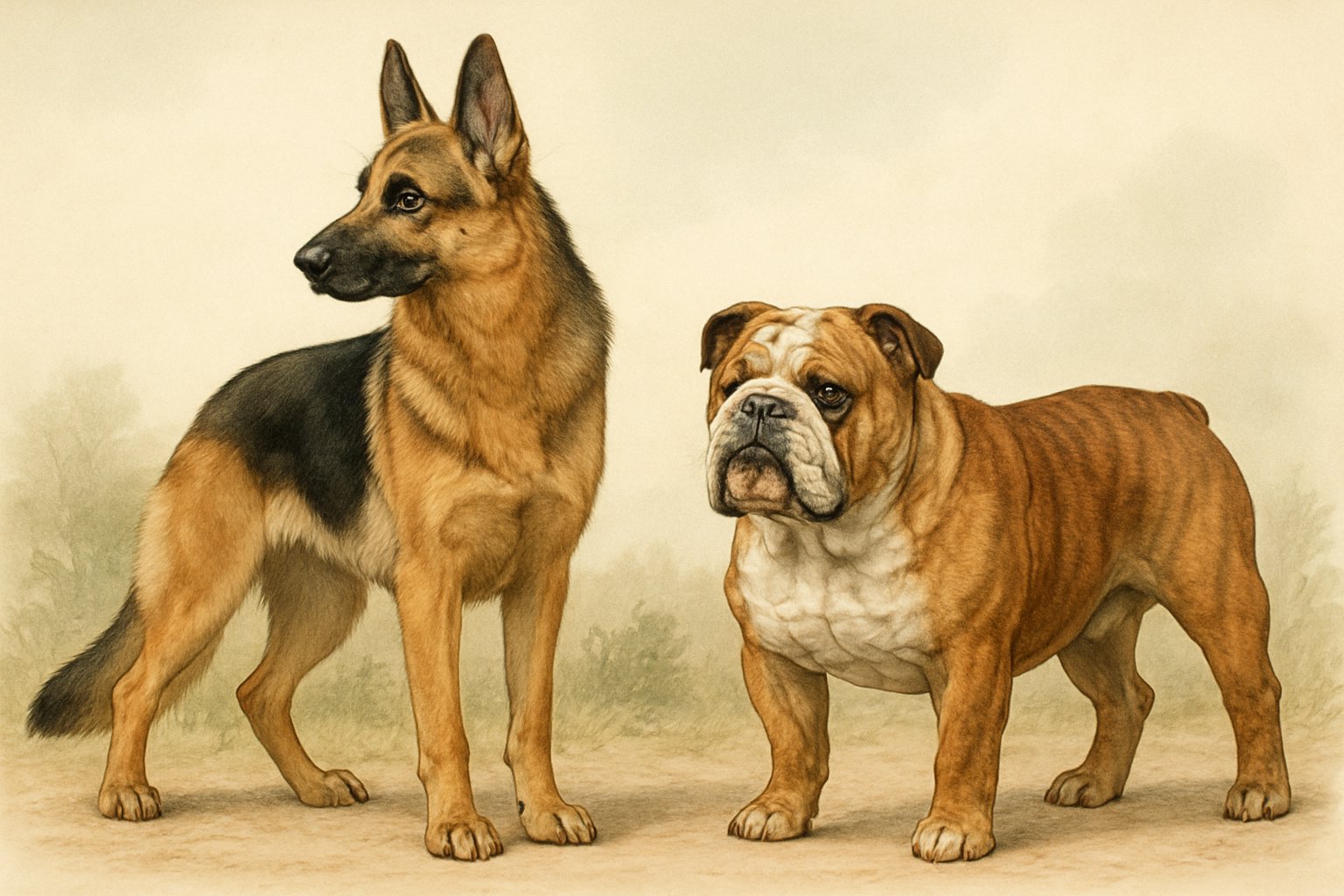
You might be asking yourself which dog fits your family or lifestyle better. Both breeds come with unique histories, personalities, and care needs.
This guide lays out a clear comparison, so you’ll have a better idea of what to expect with each breed.
Key Takeaways
- Each breed has a unique background and traits.
- German Shepherds and Bulldogs look and act very differently.
- Picking the right breed depends on your lifestyle and what you want in a dog.
Breed Origins and History
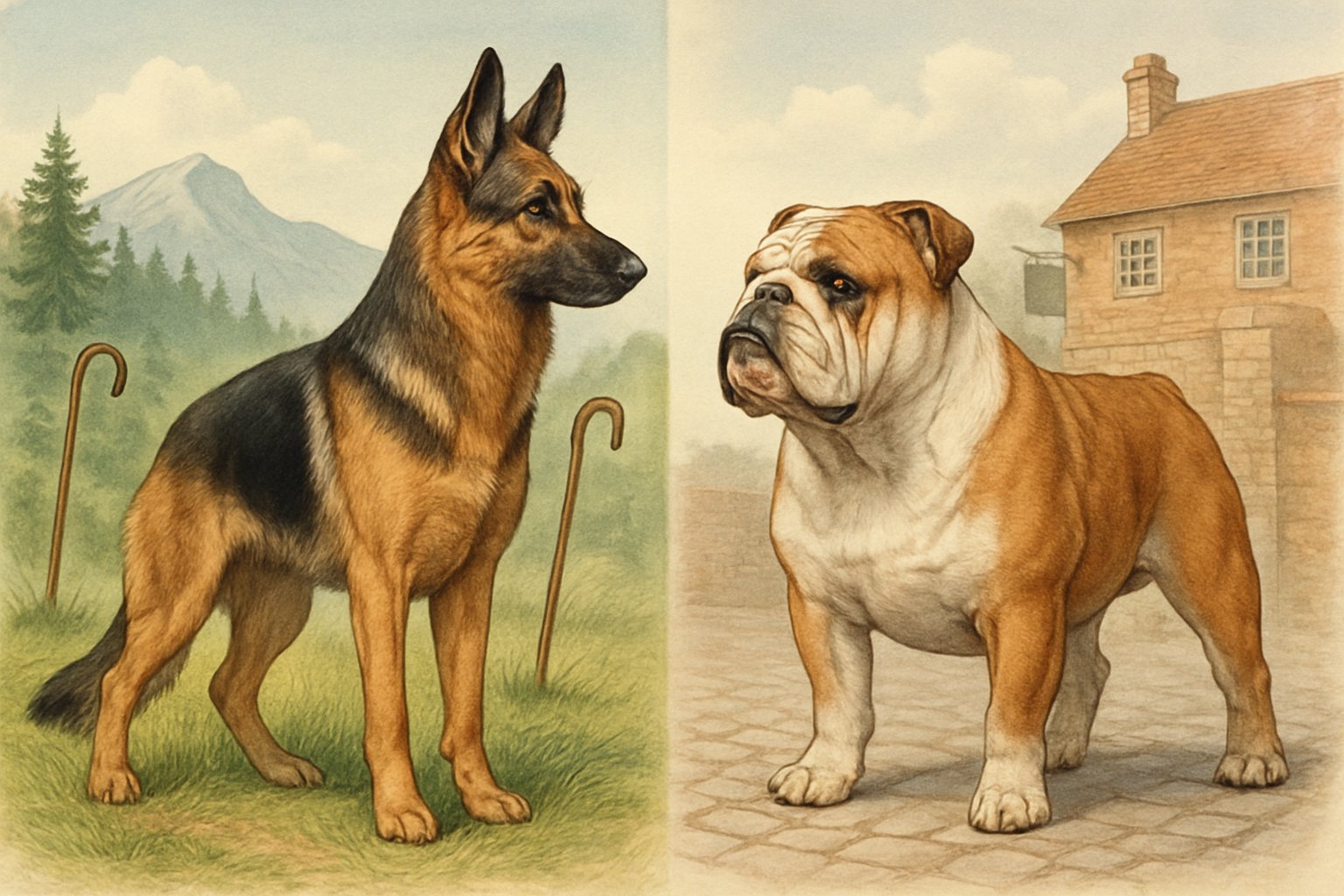
The German Shepherd and Bulldog started out in totally different places, shaped by their original jobs and the countries where they developed. Their backgrounds and how they’ve changed over time explain a lot about why they’re so different now.
German Shepherd Background
The German Shepherd breed began in Germany at the end of the 1800s. Max von Stephanitz wanted a strong, smart, and loyal herding dog.
He mixed several local shepherd dogs to create a new type known for its work ethic and trainability. German Shepherds quickly found their niche as police and military dogs because they’re sharp and obedient.
They played big roles in World War I and II—messengers, rescue dogs, guards. Their skills helped the breed spread worldwide.
The American Kennel Club (AKC) recognized the German Shepherd in 1908. Today, they’re still one of the most popular dog breeds in the U.S., whether for families or working jobs.
Bulldog Origin and Evolution
Bulldogs got their start in England, and their name comes from their old job: bull-baiting. Back in the 1500s and 1600s, people bred them for strength, courage, and a powerful jaw.
When bull-baiting became illegal in 1835, breeders shifted focus. They started breeding Bulldogs to be gentle and friendly.
Their look changed too—short legs, loose skin, and that wide, unmistakable face. These changes helped Bulldogs fit into family life and city living.
The AKC added the Bulldog in 1886. Bulldogs remain popular with folks who want a calm, loyal companion.
Role in Dog Breeding and Popularity Trends
Both breeds have shaped modern dog breeding in their own ways. German Shepherds often pass on their smarts and athleticism to other breeds.
You’ll see them in service work, police roles, and as guide dogs. Bulldogs are famous for their unique look and steady, laid-back temperament.
They’re usually bred for companionship and home life. Breeders keep an eye on their gentle nature and common health issues.
German Shepherds regularly pop up in the AKC’s top five most popular breeds, thanks to their versatility and loyalty. Bulldogs aren’t far behind, loved for their distinctive face and easygoing vibe.
Physical Characteristics and Appearance
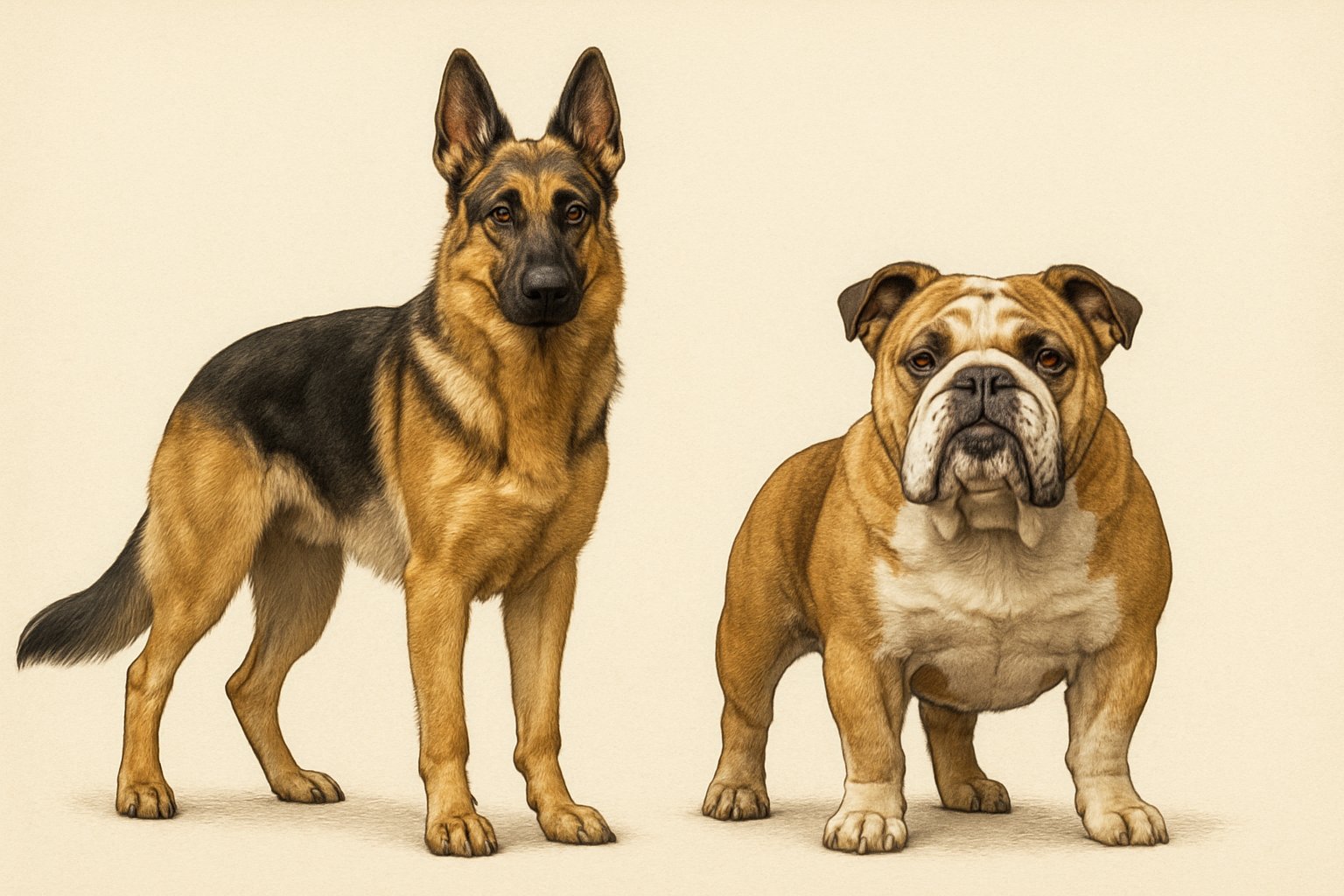
German Shepherds and Bulldogs couldn’t look more different. Their size, build, and faces are worlds apart.
They also come with their own grooming quirks.
Size and Build Comparison
German Shepherds are big, athletic dogs. Males usually weigh 65 to 90 pounds and stand 24 to 26 inches tall at the shoulder.
Females are a bit lighter, hitting 50 to 70 pounds and 22 to 24 inches tall. Their bodies are long, strong, and built for speed and agility.
Bulldogs come in a few types, but the English Bulldog is medium-sized. They weigh 40 to 50 pounds and stand 14 to 15 inches tall.
French Bulldogs are even smaller, weighing 16 to 28 pounds and standing 11 to 13 inches tall. Bulldogs have a wide, stocky build with a deep chest and short, thick legs.
They move pretty differently too. German Shepherds are quick and graceful, while Bulldogs have that unmistakable, heavy waddle.
| Breed | Average Height (in) | Average Weight (lbs) |
|---|---|---|
| German Shepherd | 22-26 | 50-90 |
| English Bulldog | 14-15 | 40-50 |
| French Bulldog | 11-13 | 16-28 |
Coat Type and Grooming Needs
German Shepherds have a double coat. The top layer is straight and dense, and the undercoat is soft.
They shed pretty much all year, with heavy “blowouts” twice a year. You’ll want to brush them several times a week to keep hair under control.
Baths aren’t needed often—every couple of months unless they get into something messy.
Bulldogs have a short, smooth, single-layer coat. English and French Bulldogs shed less than German Shepherds and only need a quick brush once a week.
Their coat is simple to care for, but you’ll need to clean their facial folds to avoid skin infections.
Bulldogs are prone to skin trouble in their wrinkles, so check and clean under their necks, faces, and tails. Bathing once a month usually does the trick.
Distinctive Features
German Shepherds have a long, wedge-shaped head and upright, pointed ears. Their almond-shaped, dark eyes give them a sharp, alert look.
They’ve got a bushy tail that hangs in a gentle curve, plus a black nose and strong jaw. The sloping back is a hallmark of the breed.
Bulldogs—especially English and French—have a flat, wrinkled face and that classic pushed-in nose. Droopy cheeks, thick shoulders, and round, dark eyes are part of the package.
Their ears might be “rose” shaped or stand up, especially in Frenchies. Bulldogs’ tails are naturally short, sometimes straight, sometimes twisted.
Other breeds like the Boxer and Mastiff have some wrinkles and a strong build, but Bulldogs are especially famous for those heavy face folds and their compact size.
Temperament and Personality
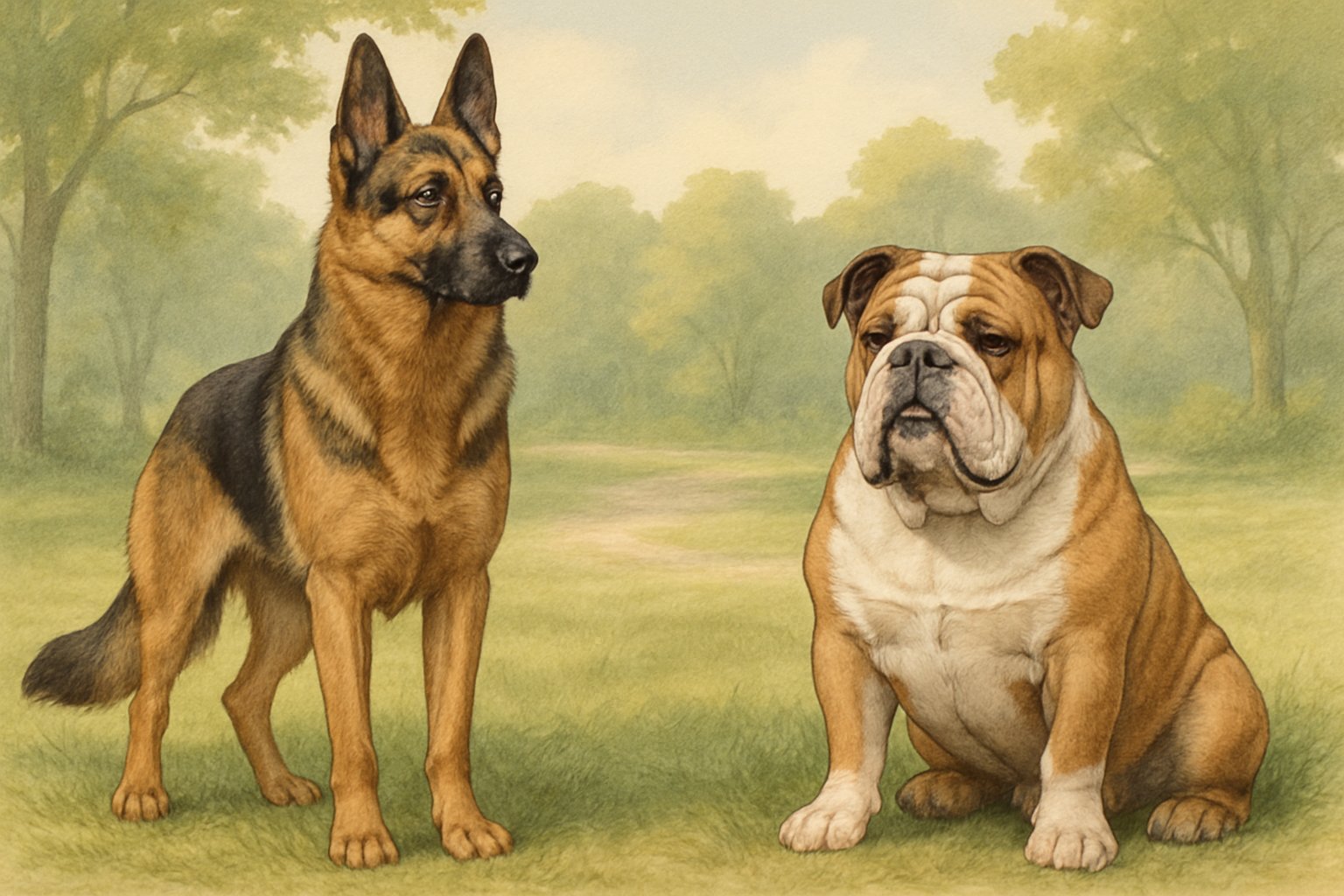
German Shepherds and Bulldogs both have their fans, but their personalities couldn’t be more different. How they act around families, other pets, and during training varies a lot.
Getting a feel for their temperament can help you pick the best fit for your home.
Family Pet Compatibility
German Shepherds are loyal and alert. They stick close to their people and protect their family, which makes them solid watchdogs.
They love being active and need regular exercise and mental challenges.
Bulldogs are way more relaxed and gentle at home. They’re affectionate and often happiest just lounging with their people.
Bulldogs get along great with kids because they’re patient and calm. Both breeds can make good family pets, but German Shepherds might be a better match for older kids or more active families.
Bulldogs are less energetic and fit better with folks who want a mellow companion. Unlike a shih tzu or golden retriever, Bulldogs don’t need tons of space or long walks.
German Shepherds do best with room to run and play.
Trainability and Intelligence
German Shepherds are among the most intelligent dog breeds. They pick up commands fast and want to please.
That makes them super trainable for all sorts of jobs—police, service work, you name it.
Bulldogs are smart too, but they can be stubborn. You’ll need extra patience and lots of positive reinforcement.
Keep training sessions short and fun to hold their attention.
If you want a dog that’s easy to train for advanced tricks or sports, a German Shepherd is probably the way to go. If you just want a chill pet who knows the basics, a Bulldog might be your speed.
Both breeds respond best to gentle, steady training—just like a golden retriever or a well-trained pit bull.
Socialization with Other Dogs and People
German Shepherds can be a bit reserved with strangers. Early socialization helps them feel comfortable around new people and pets.
Without it, they might act dominant, but with some guidance, they get along fine with other dogs.
Bulldogs are usually friendlier with both people and other dogs. They aren’t typically aggressive, but sometimes they can be a little stubborn when meeting new animals.
Bulldogs usually accept other pets, much like a shih tzu, as long as introductions go slowly.
Socialization is important for both breeds. Take time to introduce your dog to different people and places.
Training classes, dog parks, and walks help build solid social skills and prepare your dog for all sorts of situations.
Health and Lifespan Considerations
German Shepherds and Bulldogs face very different health risks during their lives. Knowing about these breed-specific issues and average lifespans can help you pick the right dog for your home.
Breed-Specific Health Issues
German Shepherds often deal with hip and elbow dysplasia, which can cause pain and mobility problems as they age. They’re also at risk for degenerative myelopathy, a disease that affects the spinal cord.
Allergies and bloat can pop up too.
Bulldogs like the English and French Bulldog, and similar breeds such as the Pug, have breathing issues because of their short noses—brachycephalic syndrome. Their skin folds can get infected, and they’re prone to joint problems like hip dysplasia.
Heart issues and overheating are also more common in Bulldogs than in German Shepherds or mixed breeds.
Other breeds, like the Doberman Pinscher, are known for heart problems but don’t have the breathing issues Bulldogs face.
Lifespan and Quality of Life
German Shepherds usually live 9 to 13 years. They tend to stay active, but conditions like arthritis can affect their comfort if not managed.
English and French Bulldogs have a shorter lifespan, usually 8 to 10 years. Many Bulldogs need extra care because of breathing and skin problems, especially when it’s hot out.
Regular vet visits and keeping their weight in check are key to helping them live better lives.
Mixed-breed dogs sometimes live longer than purebreds since they have fewer inherited health problems. Good nutrition and regular exercise help any dog—German Shepherd, Bulldog, or otherwise—enjoy a longer, happier life.
Suitability for Different Lifestyles
German Shepherds and Bulldogs need different things when it comes to their living situations. Thinking about your space, routine, and family helps you pick the breed that fits your life.
Ideal Environments and Living Conditions
German Shepherds really thrive when they’ve got space to roam. A house with a yard works best, honestly.
They can adapt to apartment life, but you’ve got to give them plenty of exercise. Without enough room, they might get restless or even a bit destructive.
Cooler temperatures suit German Shepherds more. Hot climates can make them uncomfortable, and they might overheat if you’re not careful.
Bulldogs, on the other hand, are totally fine in smaller homes or apartments. They don’t need much space and usually prefer lounging around inside.
Because of their short noses, Bulldogs can struggle in hot or humid weather. Air conditioning is pretty much a must in summer if you want them to be comfortable.
Their low activity level makes Bulldogs a great fit for city dwellers or folks without much outdoor space.
Other breeds like the Great Dane and Labrador Retriever also need room to stretch their legs. Small breeds like the Maltese, Pomeranian, or Chihuahua do just fine in apartments.
The Beagle and Shetland Sheepdog enjoy having a yard, but they’ll adapt if you make sure they get daily walks. If you want a dog that’s easy to keep in an apartment, Bulldogs and smaller breeds are solid choices.
For people with bigger homes or land, breeds like the German Shepherd, Labrador, or Cane Corso might make more sense.
Activity and Exercise Requirements
German Shepherds have a ton of energy. You’ll need to walk and play with them for at least an hour every day.
They love training, games, and learning new things. If they don’t get enough to do, they’ll get bored and probably start acting out.
Bulldogs are way more laid-back. Short daily walks—maybe 15 to 30 minutes—and some play inside usually do the trick.
Don’t push Bulldogs too hard with exercise. Too much activity or rough play can mess with their joints and breathing.
Bulldogs really aren’t built for jogging or intense sports.
The Labrador Retriever and Beagle also need lots of exercise, just like Shepherds. The Yorkshire Terrier and Maltese are happy with short walks and some indoor play.
Great Danes and Cane Corsos need daily walks, but you don’t have to take them on long runs. It’s key to match your dog’s energy with your own lifestyle.
If you’re super busy or not that active, you’ll probably get along best with a Bulldog or a toy breed.
Space and Urban Adaptability
German Shepherds really thrive when they’ve got more room. Sure, they can handle city life, but they need daily trips outside for exercise and play.
If you’re in an urban area, you’ll have to commit to regular walks or park visits. Otherwise, they’ll get restless fast.
Bulldogs, on the other hand, seem totally unbothered by apartment living. They’re fine indoors for most of the day and don’t fuss about small spaces or city noise.
Pomeranians, Maltese, Chihuahuas, and Yorkshire Terriers are favorites among city folks because of their tiny size. It just makes sense—less space, less hassle.
Breeds like the Labrador Retriever or Shetland Sheepdog want more room to roam. Apartments can feel a bit too tight for them.
If you live downtown or in a small apartment, Bulldogs or those little companion breeds are a great match. Suburban or rural homes? That’s where German Shepherds and bigger breeds really feel at home.

